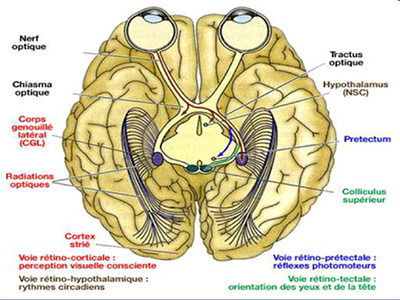
Low-energy light bulbs, TV and computer screens, game consoles and smartphones play havoc with your biological clock.

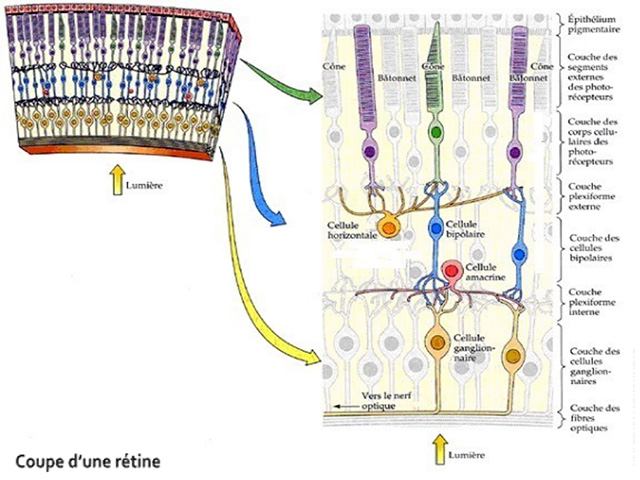 To most people the purpose of their eyes is vision. However fewer are aware of the eye’s non-visual functions, especially that of controlling the production of melatonin — the sleep hormone.
To most people the purpose of their eyes is vision. However fewer are aware of the eye’s non-visual functions, especially that of controlling the production of melatonin — the sleep hormone.
It was long thought that the eyes of humans and other mammals had only two types of photoreceptors: cones and rods. However research over the last decade has revealed a third type of photoreceptor, quite distinct from rods and cones.
Photoreceptors of the third type
This type of photoreceptor uses a different photopigment called melanopsin, which is less sensitive to light.
Known as “intrinsically photosensitive retinal ganglion cells” (or ipRGCs), these cells, numbering about 3,000, are a subset of ganglion cells. What is surprising is that the only function of these photoreceptors is to communicate directly with the brain. They have no visual function.
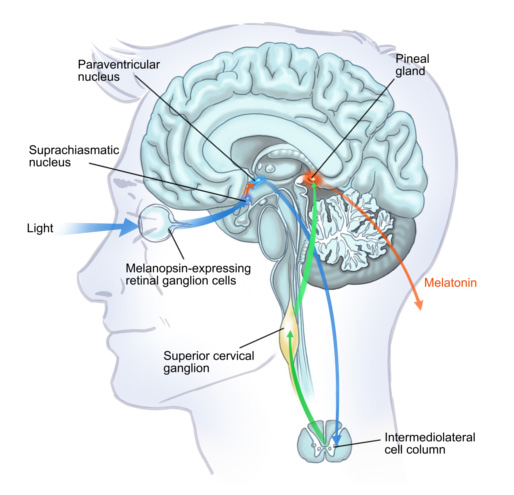 Blue light disturbance
Blue light disturbance
These photosensitive cells thus regulate functions other than sight, in particular:
- the synchronization of the biological clock (circadian rhythm) with light,
- alertness, reactivity and mood,
- learning capacity and thought process.
Shortwave blue light stimulating the ipRGC cells in the retina express the pigment melanopsin, which acts through the retinohypothalamic tract to suppress the secretion of melatonin (the sleep hormone) by the pineal gland. This interferes with the ability to fall and stay asleep.
The circadian rhythm
The behavior of humans and other terrestrial animals follow diurnal cycles of light and dark. These cyclical changes in behavior are called circadian rhythms. Circadian rhythms .
Circadian rhythms are biochemical, physiological and behavioral cycles over a period of around 24 hours, governed by a biological clock which is regulated by the frequency of day and night, as perceived by the specialized photoreceptors in the retina.
Biological clock and the circadian rhythm
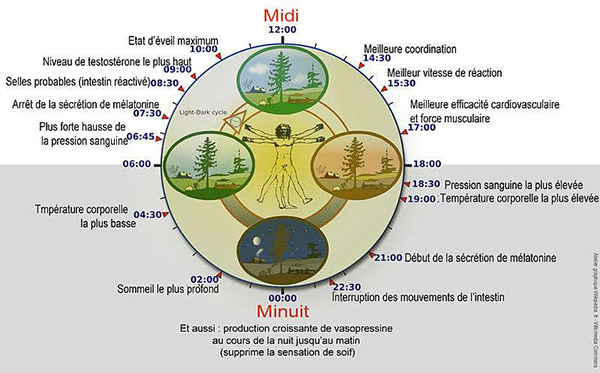
The effect of different wavelengths of light on the secretion of melatonin
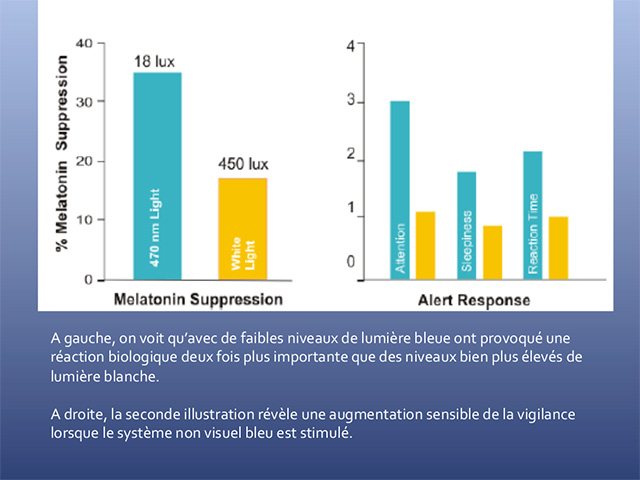
Despite its low light of 18 lux, a low-energy bulb provokes twice the biological reaction than the far brighter (450 lux) light from an incandescent bulb.
Effects of melatonin
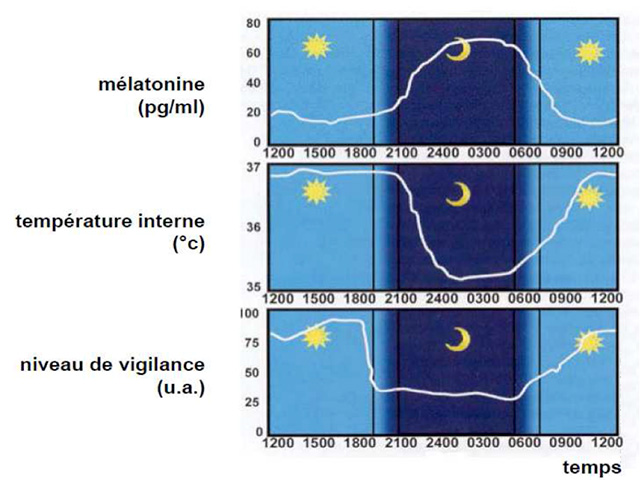
Blue light… or coffee
Melatonin also lowers your body temperature during the night, which means you are less alert. It also has an effect on attentiveness, learning and remembering.
Conversely, experiments in France and Sweden on the effects of blue light from car dashboards while driving at night indicate that it’s as good as coffee for keeping the driver alert. Which is why it also interferes with sleep.
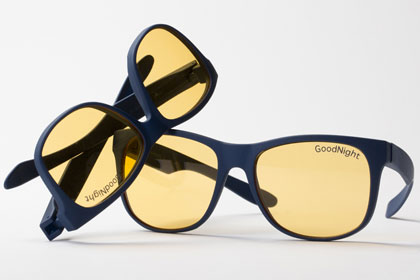
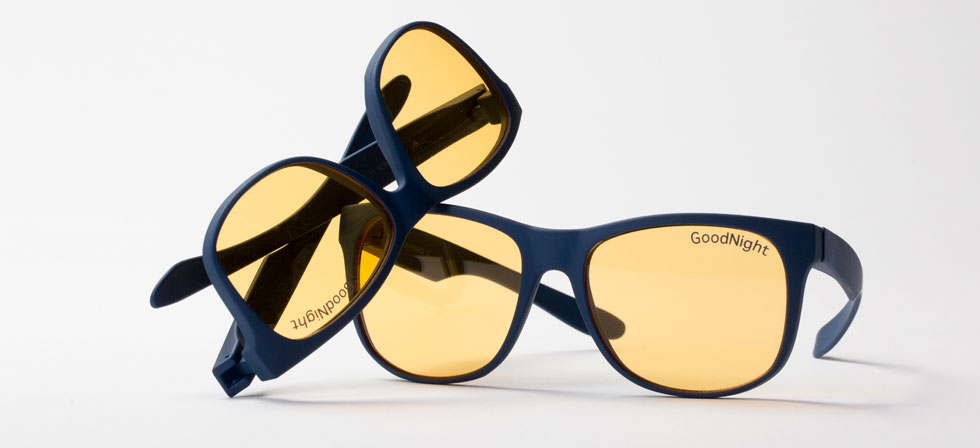
GoodNight® restores 100% natural sleep
The blue light wavelengths emitted by TV, computer or smartphone screens, as well as by the new generation of low-energy light bulbs, suppress your production of melatonin, the hormone that regulates your sleep patterns.
Blue light is 100 times more active on the light-sensitive receptors in your retina than the white light from traditional light sources, for the same intensity of light.
The high-tech GoodNight® glasses filter and block this high-energy shortwave light. This protection allows your body to resume production of melatonin. And you’ll find that you quickly resume natural sleep as well.
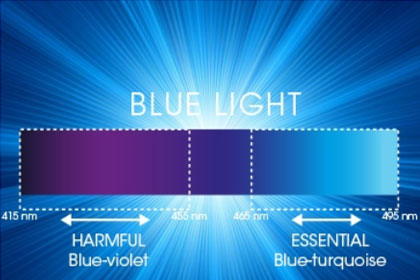
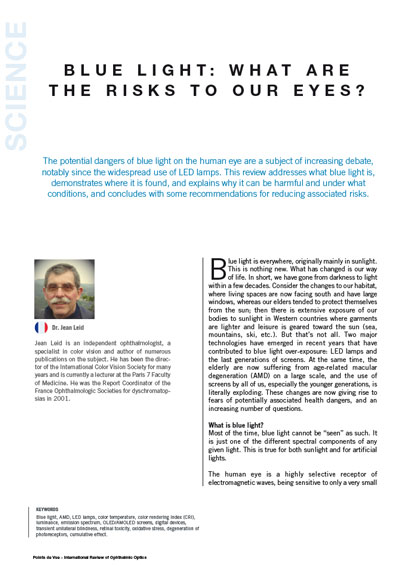 Click here to read the articleThe potential dangers of blue light on the human eye are a subject of increasing debate, notably since the widespread use of LED lamps. This review addresses what blue light is, demonstrates where it is found, and explains why it can be harmful and under what conditions, and concludes with some recommendations for reducing associated risks
Click here to read the articleThe potential dangers of blue light on the human eye are a subject of increasing debate, notably since the widespread use of LED lamps. This review addresses what blue light is, demonstrates where it is found, and explains why it can be harmful and under what conditions, and concludes with some recommendations for reducing associated risks
Blue light is everywhere, originally mainly in sunlight. This is nothing new. What has changed is our way of life. In short, we have gone from darkness to light within a few decades. Consider the changes to our habitat, where living spaces are now facing south and have large windows, whereas our elders tended to protect themselves from the sun; then there is extensive exposure of our bodies to sunlight in Western countries where garments are lighter and leisure is geared toward the sun (sea, mountains, ski, etc.). But that’s not all. Two major technologies have emerged in recent years that have contributed to blue light over-exposure: LED lamps and the last generations of screens. At the same time, the elderly are now suffering from age-related macular degeneration (AMD) on a large scale, and the use of screens by all of us, especially the younger generations, is literally exploding. These changes are now giving rise to fears of potentially associated health dangers, and an increasing number of questions.
Article from the magazine "Point de vue"

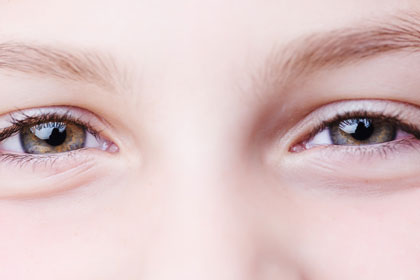

If you suffer from nausea, headaches, dizziness or fatigue when riding in a car, shopping, reading, using a computer or smart phone, exercising or watching movies and are extra sensitive to light.
You may have the SEE Sick Syndrome when just SEEING motion and eye movement triggers the symptoms.
The good news !
There is a drug free cure with Dynamic Adaptive Vision Therapy


